Family Asclepiadaceae Higher classification Calotropis | Genus Calotropis Rank Species | |
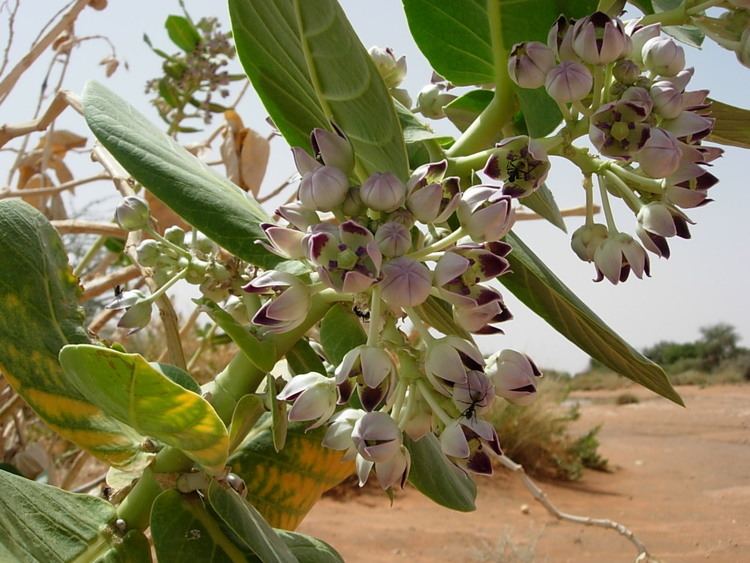 | ||
Similar Calotropis, Calotropis gigantea, Asclepiadoideae, Apocynaceae, Milkweed | ||
Calotropis procera ak and seed dispersion
Calotropis procera is a species of flowering plant in the family Apocynaceae that is native to North Africa, Tropical Africa, Western Asia, South Asia, and Indochina. The green globes are hollow but the flesh contains a toxic milky sap that is extremely bitter and turns into a gluey coating resistant to soap.
Contents
- Calotropis procera ak and seed dispersion
- Calotropis procera flowering in agra india
- History
- Chemical properties
- References
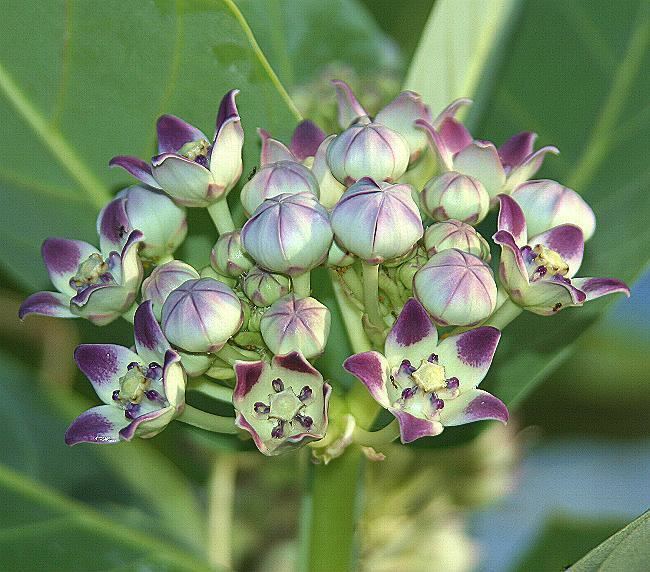
Common names for the plant include apple of Sodom, Sodom apple, stabragh, kapok tree, king's crown, rubber bush, or rubber tree. The name apple of Sodom derives from the Hebrew Tapuah Sdom.
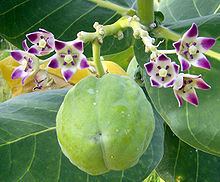
Calotropis procera flowering in agra india
History
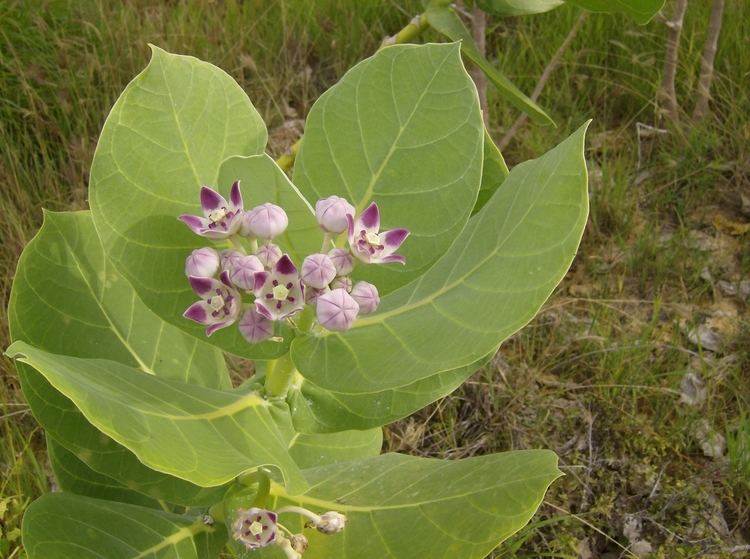
The fruit is described by the Roman Jewish historian Josephus, who saw it growing near Sodom: "...as well as the ashes growing in their fruits; which fruits have a color as if they were fit to be eaten, but if you pluck them with your hands, they dissolve into smoke and ashes." (Whiston 1737: Book IV chapter 8 section 4)
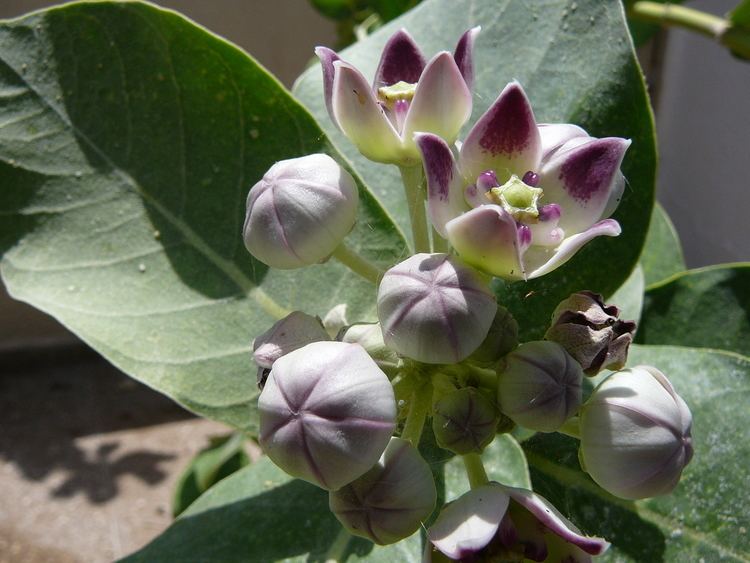
In his Biblical Researches in Palestine, Edward Robinson describes it as the fruit of the Asclepias gigantea vel procera, a tree 10–15 feet high, with a grayish cork-like bark called osher by the Arabs. He says the fruit resembled a large, smooth apple or orange, hanging in clusters of three or four. When pressed or struck, it exploded with a puff, like a bladder or puff-ball, leaving in the hand only the shreds of the thin rind and a few fibers. It is filled chiefly with air, which gives it the round form. In the center a small slender pod runs through it which contains a small quantity of fine silk, which the Arabs collect and twist into matches for their guns. The plant, however, is not native solely to Palestine. It is known to occur throughout the tropical belt and is also common in the West Indies (e.g. Jamaica), where the locals know it as "pillow cotton". When the ripe "apples" burst, the fibrous contents are ejected along with the seeds. The former are collected by the Jamaicans and used for filling pillows.
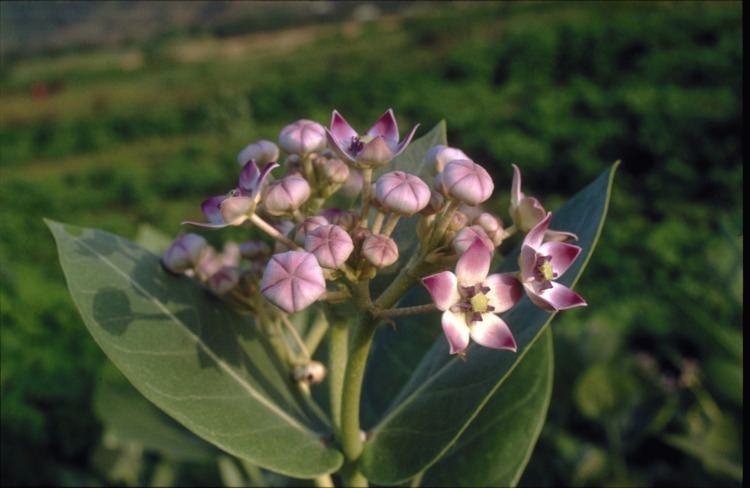
Sodom apple is listed in the Mishnah and Talmud. The fibers attached to the seeds may have been used as wicks. However the Mishnah forbids this for the Sabbath.: "It may not be lighted with cedar-bast, nor with uncombed flax, nor with floss-silk, nor with willow fiber, nor with nettle fiber.- Sabbath Chapter 2"
Some biblical commentators believe that the Sodom Apple may have been the poisonous gourd (or poison-tasting gourd) that led to "death in the pot" in 2 Kings 4:38–41. In this story, a well-meaning servant of the prophet Elisha gathers herbs and a large quantity of the unknown gourds, and casts them into the pot. After the outcry from the band of prophets, Elisha, instructs them to cast flour into the stew pot, and they are saved. The fibre of the Sodom Apple may have been used for the linen of the high priests.
In 1938, botanists Hannah and Ephraim HaReuveni, authors of the "The Squill and the Asphodal," speculated that Jeremiah’s arar was the Sodom apple.
Chemical properties
The milky sap contains a complex mix of chemicals, some of which are steroidal heart poisons known as "cardiac aglycones". These belong to the same chemical family as similar chemicals found in foxgloves (Digitalis purpurea). The steroidal component includes an hydroxyl group in the C3β position, a second attached to the C14 carbon, a C/D-cis ring junction and an α,β-unsaturated-γ-lactone in the C17 position. In the plants, the steroidal component is commonly attached via a glycosidic link to a 2-desoxy or a 2,6-didesoxy sugar molecule. The features described are those required for toxicity but in addition there can be other substitutions into the steroid nucleus. These can be a C19-aldehyde in place of the more usual methyl group in this position as well as additional hydroxyl functions and sometimes epoxide structures.
In the case of the Calotropis glycosides, their names are calotropin, calotoxin, calactin, uscharidin and voruscharin (the latter two involve rare sugars with nitrogen and sulphur in the structures). The steroidal moiety (known as "calotropagenin", formula C23H32O6) has one of the more unusual structures. The C-19 formyl (CHO) group is present and there is an additional secondary alcohol as well as the common C3 and D15 hydroxyl functions. The position of this third hydroxyl function remains in some doubt. It was apparently established by the Swiss group under Thadeus Reichstein as being in the C2 position with an equatorial configuration. However, this assignment does not explain some of the known features and behaviours of this molecule, in particular the absence of spin-spin coupling of the two axial protons associated with their geminal hydroxyl groups and the failure to react with iodate in a cleavage reaction which the presence of such a viscinal 1,2-diol would require.
